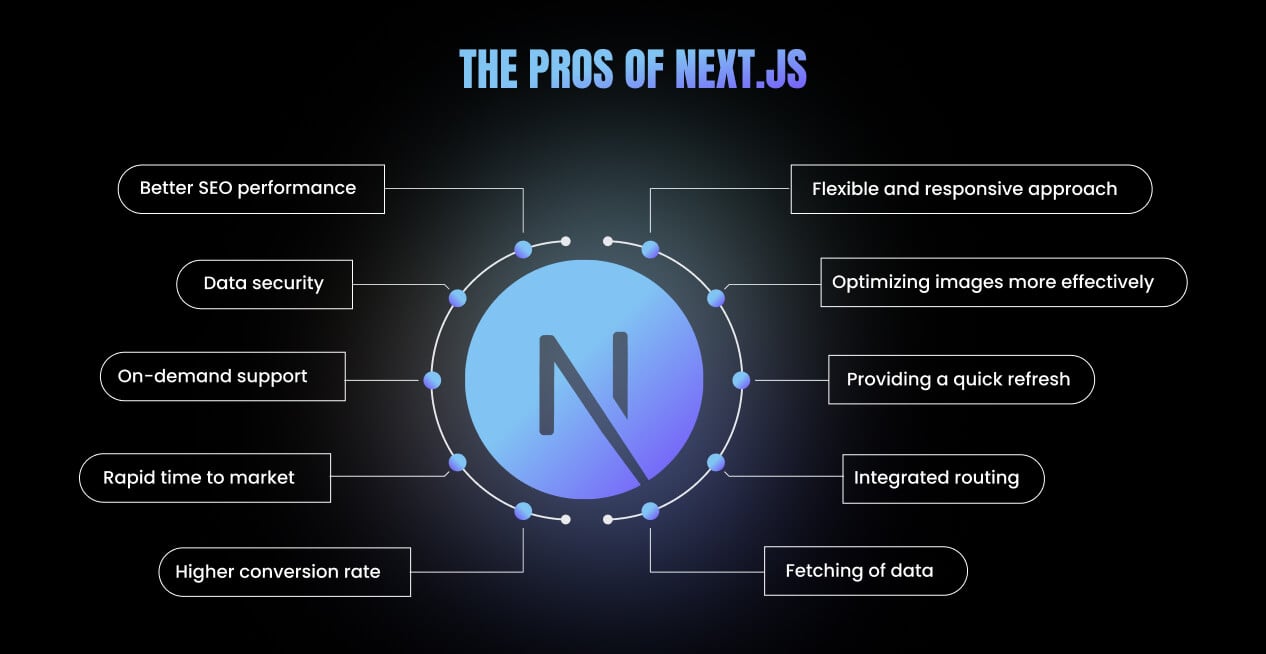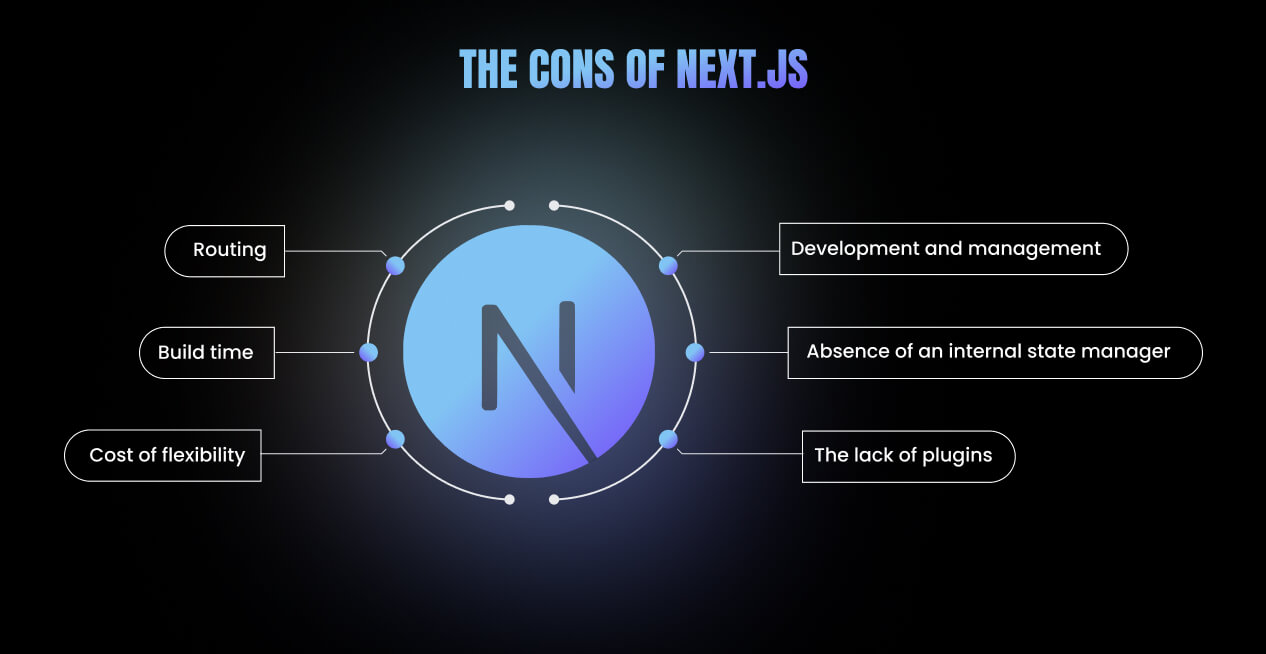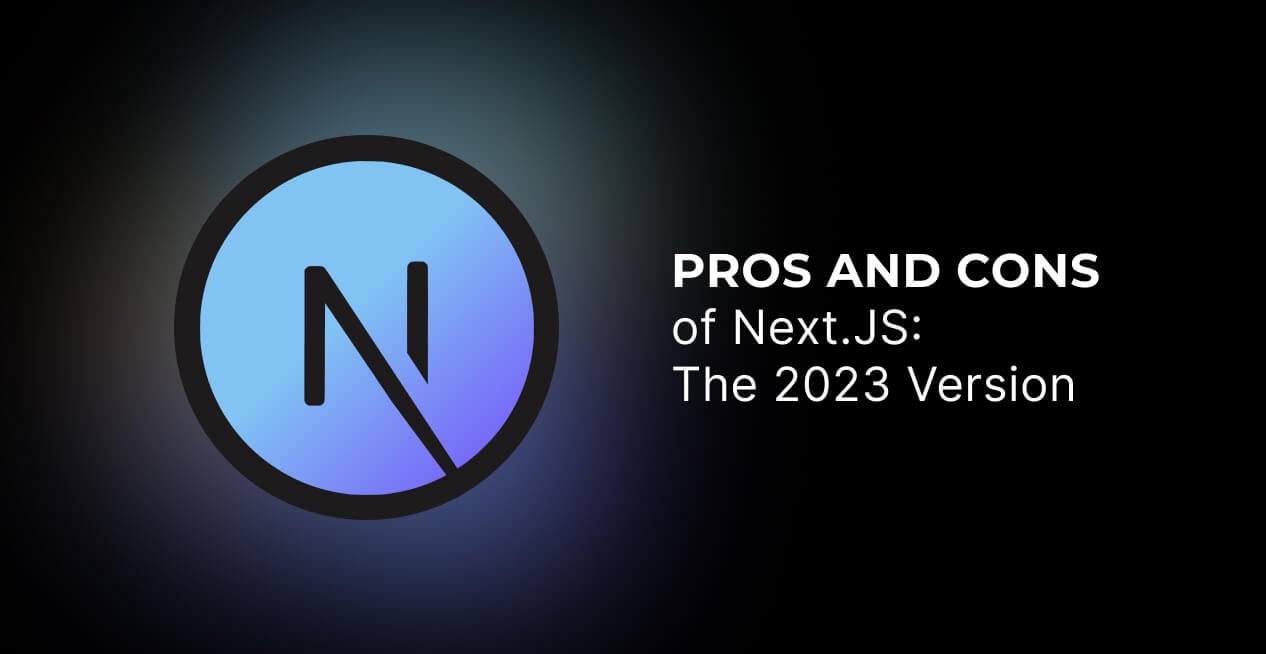The web technology landscape is constantly evolving and growing. The development of fast, SEO-friendly web applications can often be complicated and inefficient. A popular React framework, Next.js is ideal for building static web pages, as static web pages have become more popular in the web development world in recent years.
If you’re developing a website, you may be unsure whether or not Next.js is a good choice. Choosing the right option with confidence requires knowing the pros and cons of each option prior to making a decision. This article will explain what Next.js is, as well as its advantages and disadvantages.
What is Next.js?
Next.js is a React framework for building supercharged, SEO-friendly, and extremely user-friendly static websites and web applications. The Next.js development framework is well known for its developer-friendly features that make it easy for developers to build production-ready applications.
No extra configuration is required, and it comes with hybrid static and server rendering, TypeScript support, smart bundling, route prefetching, and more.
Next.js popularity
Next.js has become popular with larger companies due to its performance, extensibility, and ease of configuration. Next.js ranked fifth for frontend development on StackOverflow in 2022, even ahead of React in sixth place, based on their developer survey. There is no doubt that people enjoy what Next.js has to offer. Several companies have migrated to the Next.js framework according to the Next.js website. Among the biggest and most well-known companies that use Next.js are Netflix, Uber, Starbucks, and Twitch.
Are Next.js and React the same?
No, React is not the same as Next.js.
There are a few similarities between these two frameworks, including the fact that they both use reusable components that are fairly easy to integrate into your web applications. The purpose of Next.js is actually to fill some of the gaps left by React. Content is loaded differently on each page.
Next.js is a framework based on React that provides server-side rendering and automatic code splitting. The React library is a JavaScript library that builds user interfaces while Next.js adds functionality to make certain types of web applications easier to build.
Pros and Cons of Next.js
The pros of Next.js
In the following section, we’ll discuss in detail the advantages of Next.js. Let’s look at how Next.js can improve your business performance and assist you to advance your ideas.

1. Better SEO performance
It’s still crucial to keep in mind that employing SSR as opposed to client-rendered JavaScript can significantly increase your exposure in search engines. It enables you to create web applications with all the necessary capabilities and interactivity while retaining the SEO advantages of a static text-based website. And it will offer you a significant advantage over your rivals. About half of the developers do not view SEO as a crucial element during development, according to the findings of the State of Frontend research.
2. Data security
Static web pages created with Next.js do not directly access the database, dependencies, user information, or any other private data. The security of the data is ensured by this.
3. On-demand support
As React and Next.js get more popular, so does the number of developers. It will be easy to locate a Next.js development company or freelancer to carry out any required revisions as a result.
4. Rapid time to market
With its ready-to-use components and compatibility, building MVPs is much easier. This allows you to get real-time feedback from real users without wasting time or budget.
5. Higher conversion rate
Fast loading speeds, better user experiences, and high accessibility lead to increased conversion rates. Having a positive customer experience increases the likelihood of users buying and coming back later.
6. Flexible and responsive approach
It is commonly found that websites and apps developed with Next.js are adaptable and responsive in a manner that meets or exceeds industry standards. It is possible to adjust their capabilities to fit any screen size and operate on any device that triggers their use.
7. Optimizing images more effectively
A built-in Automatic Image Optimisation feature automatically optimizes images using the image component. Due to its up-to-date standard, WebP is used for downsizing and serving images, and it is set up to take advantage of smaller viewports.
8. Providing a quick refresh
Every time a new code is added, the built-in fast refresh feature automatically reloads the page. Developers no longer have to switch tabs and click the refresh button to test changes. As a result, you do not have to reload the page every time you make a change.
9. Integrated routing
A file-based routing system is used by Next.js. Files stored in the pages folder are automatically converted to routes by the server. As opposed to React applications which require installing and configuring React routers. Additionally, it fetches pages whose links are in the viewport. The feature works only on pages using SSG, but even so, it makes navigating between pages very fast.
10. Fetching of data
Depending on the app’s use case, this option renders content differently. In addition, content can be updated or created by using information service rendering (ISR) or server-side rendering (SSR).
The cons of Next.js
Despite NextJS’ rapid development and many features, it still has some cons and issues. Have a look at the disadvantages of Next.js.

1. Routing
Since Next.js can only handle routes using a file router, we cannot modify how it handles routes. A Node.js server is required to use dynamic routes.
2. Build time
Building apps with multiple pages can take a long time because Next.js supports static web development.
3. Cost of flexibility
The lack of built-in front pages in Next.js means that the developer must create the complete front-end layer from scratch, which comes at the cost of flexibility.
4. Development and management
The user will require a dedicated professional to oversee the development and management if they wish to use Next.js to create an online store but don’t have an internal development team.
5. Absence of an internal state manager
The user will require a state manager and Redux, MobX, or anything similar.
6. The lack of plugins
The user can’t employ as many readily adaptable plugins as they might with other competitors like Gatsby.js.
An alternative to Next.js?
The following are some popular and possible Next.js alternatives:
React, Gatsby, Loopback, React Router, Create React App, Angular Universal, Hugo, RemisJS, etc.
Where can you find Next.js development services?
On top of the development itself, finding the best Next.js development company is another complex task. OpenXcell provides scalable, feature-rich, and high-speed Next.js applications for your business. Contact us and we will do the work for you. Our lead developer can tell you more about multiple frameworks and help you choose one for your next project. Let’s connect.
Wrapping up
With its capabilities, tools, and setup, Next.js is a good choice when developing enterprise and production-ready React applications because it reduces the hassle of creating these applications.
We’ve looked at the various Next.js pros and cons in this guide to help you create your upcoming enterprise-ready applications. You now understand that there are several benefits to trying Next.js, even if you have never used it before. Certainly, it is a next-level technology, as it presents a number of reasons for marketers, businessmen, corporations, and merchants to adopt it. We hope this blog assists you in determining whether to use Next.js for your upcoming project.








